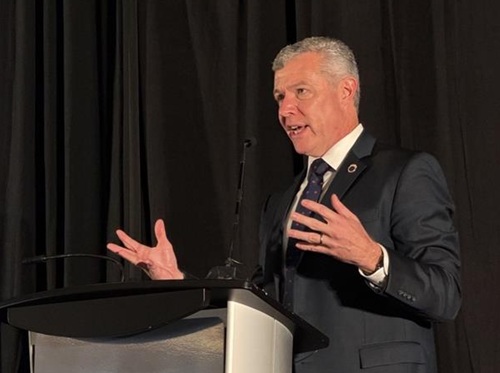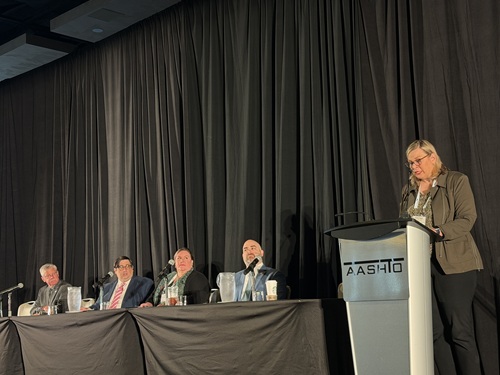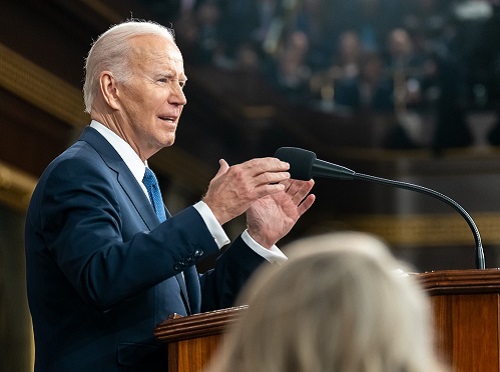President Biden (above) placed key emphasis on his administration’s success in promoting infrastructure investment across the country in his second “State-of-the-Union” address to Congress on February 7.
[Above Official White House Photo by Adam Schultz]
“To maintain the strongest economy in the world, we also need the best infrastructure in the world,” the president said in his remarks. “We used to be number one in the world in infrastructure, then we fell to thirteenth. [But] now we’re coming back.”
Biden touted the $1.2 trillion Infrastructure Investment and Jobs Act or IIJA, enacted in November 2021, as the driving force behind that renewed focus on infrastructure investment – especially in transportation systems nationwide.

“Already, we’ve funded over 20,000 projects, including at major airports from Boston to Atlanta to Portland,” he said. “These projects will put hundreds of thousands of people to work rebuilding our highways, bridges, railroads, tunnels, ports and airports, clean water, and high-speed internet across America.”
President Biden also highlighted the introduction of new “Buy America” rules to govern sourcing of materials for those projects.
“[These] new standards require all construction materials used in federal infrastructure projects to be made in America – American-made lumber, glass, drywall, fiber optic cables,” he said. “And on my watch, American roads, American bridges, and American highways will be made with American products.”

[Editor’s note: In November 2022, the American Association of State Highway and Transportation expressed concerns to the U.S. Department of Transportation regarding those new rules, especially in terms of their implementation timeline, paperwork requirements, and impact on product availability for infrastructure projects.]
President Biden also stressed that investment will go toward making U.S. infrastructure more resilient against natural disasters as well as “greener” in support of transportation electrification efforts.
“In addition to emergency recovery from Puerto Rico to Florida to Idaho, we are rebuilding for the long term, [with] roads and water systems [designed] to withstand the next big flood and we’re building 500,000 electric vehicle charging stations installed across the country,” he said.

In terms of building out that network, the Federal Highway Administration issued final approvals for EV infrastructure deployment plans submitted by all 50 states, the District of Columbia, and Puerto Rico in September 2022.
Those plan approvals allow the transportation departments in all 50 states, the District of Columbia, and Puerto Rico to unlock more than $900 million in fiscal year 2022 and 2023 funding available through the National Electric Vehicle Infrastructure or NEVI formula program established by the IIJA, FHWA said at the time.
AASHTO and state departments of transportation across the country are also hard at work integrating resilience into their infrastructure decision-making process. Resiliency is also a key emphasis area for the one-year term of current AASHTO President Roger Millar, secretary of the Washington State Department of Transportation.
 Top Stories
Top Stories
Collaboration Touted at AASHTO’s Third Safety Summit
October 31, 2025 Top Stories
Top Stories

